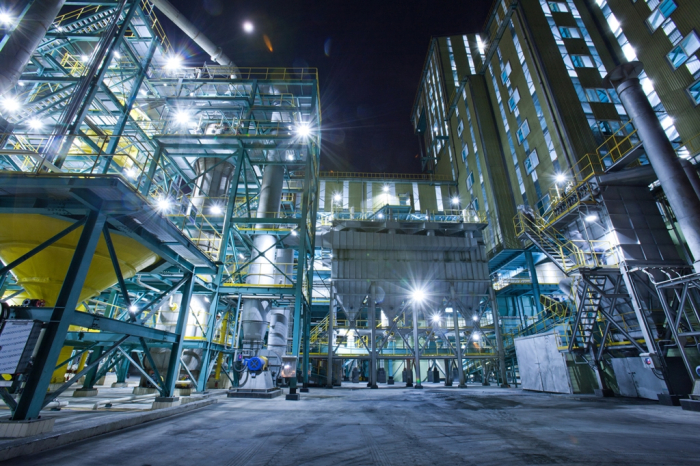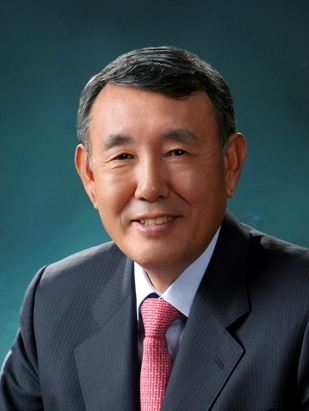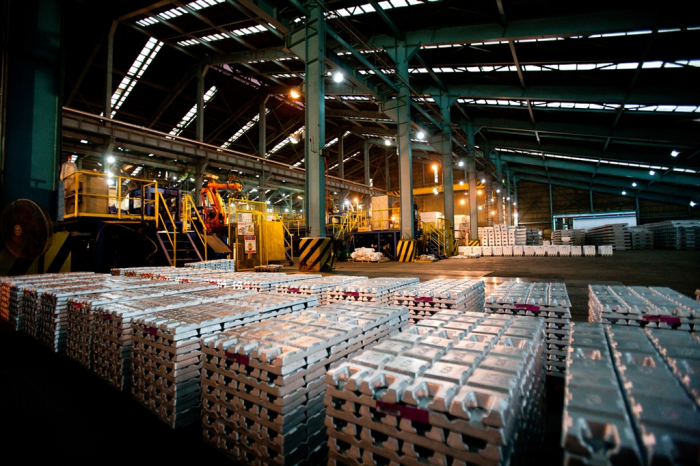Non-ferrous metals
Korea Zinc emerges winner despite sharp decline in treatment fees
The world’s top zinc and lead smelter is set to join the trillion won revenue club this year on robust sales
By Sep 05, 2021 (Gmt+09:00)
3
Min read
Most Read
LG Chem to sell water filter business to Glenwood PE for $692 million


Kyobo Life poised to buy Japan’s SBI Group-owned savings bank


KT&G eyes overseas M&A after rejecting activist fund's offer


StockX in merger talks with Naver’s online reseller Kream


Mirae Asset to be named Korea Post’s core real estate fund operator



Just like many other manufacturers around the world, 2020 was a turbulent year for Korea Zinc Co., the world’s largest lead and zinc smelter.
The South Korea-based company saw its treatment charges (TCs), fees it receives from miners for processing zinc concentrate into refined metal, drop considerably even into this year, hurting its earnings.
Nevertheless, Korea Zinc eked out decent operating profit margins as the company’s advanced refining technology offset falling TCs with more byproduct extracts such as gold, silver and sulfuric acid plus rising zinc prices in the global market.
“The falling TCs must have cut Korea Zinc’s profit by as much as 300 billion won in the first half alone. Still, the company posted decent earnings as the loss was offset by higher gains in other byproducts,” said an industry official.
In the first six months of this year, Korea Zinc posted an operating profit of 543 billion won ($469 million) on revenue of 4.58 trillion won – record first-half results for the company.
The stellar performance came as the spot zinc treatment charge plummeted to around $80 per ton in August this year from a high of $300 in March 2020 due to a weak supply of zinc concentrate from miners amid the COVID-19 pandemic.
But demand for zinc and lead has been growing from the start of this year with the recovering global economy and increased sales of electric vehicle batteries, which use those metals as raw materials.

HIGHER METAL PRICES OFFSET WEAK TREATMENT FEES
According to Korea Resources Corp., the global zinc price rose to $2,984.5 a ton as of Sept. 3, up about 10% from $2,700 at the end of 2020. The price has risen 75% from March 2020, when COVID infections began to spread rapidly worldwide.
With its annual production capacity of 650,000 tons of zinc and 420,000 tons of lead, the Korean smelter has also posted decent earnings from higher prices of byproducts.
While smelting the non-ferrous metal concentrate, Korea Zinc also produces 12 tons of gold, 2,500 tons of silver and 1.5 million tons of sulfuric acid annually as byproducts.
Prices of gold and silver have been rising steadily since last year. The sulfuric acid price has risen almost 150% from the end of 2020 on increased demand for the raw material from makers of semiconductors and batteries.
Despite the weak business cycle in past years, Korea Zinc has been posting an operating profit margin of over 10% every year since 2006, and analysts expect the company to join the trillion won revenue club this year with an estimated 2021 sales of 1.08 trillion won.
“The zinc concentrate supply chain is in a recovery phase and product demand is increasing. We expect the international benchmark TC to also rise again from later this year,” said a Korea Zinc official.

BUSINESS DIVERSIFICATION
Established in 1974, the company has dedicated itself to non-ferrous metal smelting, manufacturing zinc ingots, electrolytic gold, silver, lead, sulfuric acid and copper.
More than half of refined zinc is used as an alloy or for plating material. Zinc coated steel sheets are used in the automotive industry and roughly 80% of refined lead is used as a material in battery production.
In efforts to diversify its business portfolio, Korea Zinc Chairman and CEO Choi Chang-keun is also trying to enter the battery material business through joint ventures.
In 2018, the company joined hands with LG Chem Ltd. to establish Korea Energy Materials Co. (KEMCO), a JV that produces nickel sulfate, a raw material for lithium-ion batteries and plating.
Korea Zinc and LG Chem are also seeking to build a battery precursor JV. A precursor is a material created by mixing nickel, cobalt and manganese, and is added to lithium to make cathodes.
Write to Jung-hwan Hwang at jung@hankyung.com
In-Soo Nam edited this article.
More to Read
-
 EV BatteriesSurging battery material costs put roadblock to EV growth
EV BatteriesSurging battery material costs put roadblock to EV growthJul 28, 2021 (Gmt+09:00)
3 Min read
Comment 0
LOG IN


